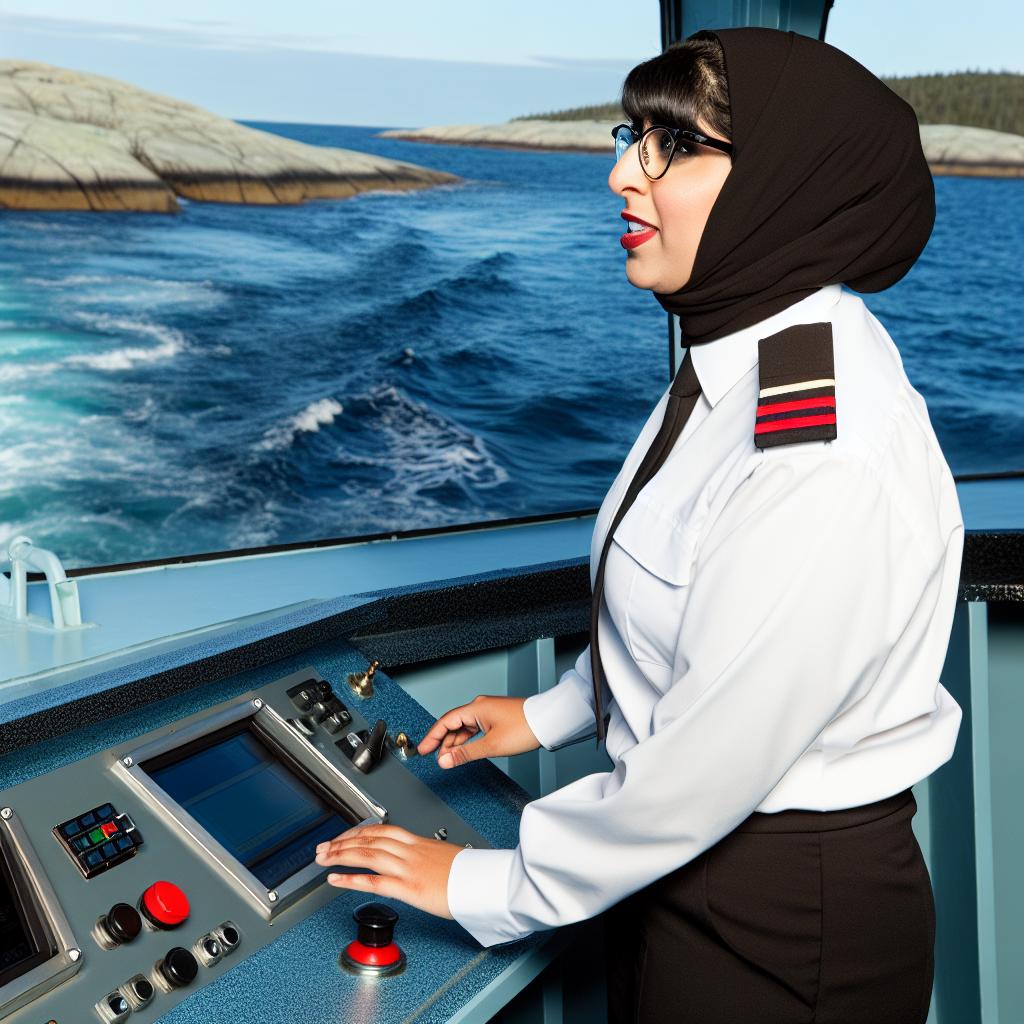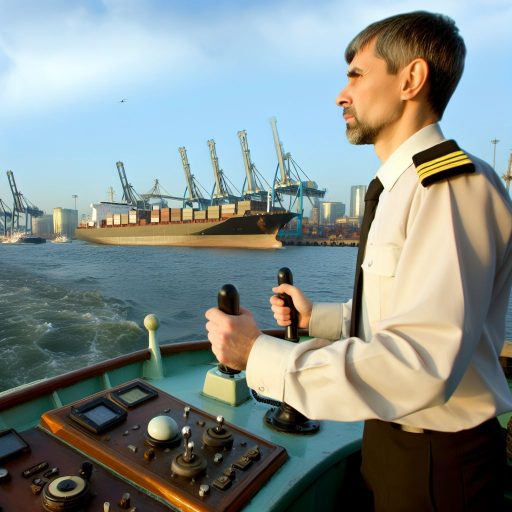Introduction to Maritime Pilots and Their Responsibilities
Maritime pilots play a vital role in shipping and navigation.
These professionals ensure vessels navigate safely through challenging waters.
They possess extensive training and local knowledge of maritime routes.
Additionally, they help prevent accidents and environmental disasters.
Essential Functions of Maritime Pilots
Maritime pilots board vessels to guide them into port.
Their expertise is crucial in areas with heavy traffic or difficult navigation conditions.
They communicate closely with vessel crews and port authorities.
This collaboration enhances safety and efficiency during the docking process.
Environmental Stewardship
One of the key responsibilities of maritime pilots is environmental protection.
Pilots help to minimize the impact of shipping activities on marine ecosystems.
They are trained to recognize sensitive areas and take appropriate actions.
Furthermore, they advise on best practices to avoid spillages and collisions.
Risk Assessment and Crisis Management
Maritime pilots conduct thorough risk assessments while navigating.
They evaluate environmental conditions, traffic, and vessel capabilities.
In emergencies, they implement crisis management strategies quickly.
This proactive approach can mitigate harmful outcomes for the environment.
Collaboration with Environmental Agencies
Many pilots work closely with environmental agencies and organizations.
This partnership fosters better understanding of ecological concerns.
Joint initiatives promote sustainable practices within maritime operations.
Moreover, they participate in training programs to enhance environmental awareness.
The Significance of Maritime Transportation in Global Trade
Essential Role in the Economy
Maritime transportation plays a crucial role in the global economy.
It facilitates the movement of goods across vast distances.
Over 80% of international trade is conducted via maritime routes.
This mode of transport is both cost-effective and efficient.
Connection to International Markets
Shipping connects producers to consumers worldwide.
Unlock Your Career Potential
Visualize a clear path to success with our tailored Career Consulting service. Personalized insights in just 1-3 days.
Get StartedCompanies rely on shipping to access international markets.
In fact, maritime transport allows businesses to expand their reach.
This access significantly boosts trade volumes.
Contributions to Employment
The maritime industry generates millions of jobs globally.
From shipbuilding to logistics, numerous sectors thrive on maritime trade.
Additionally, it nurtures local economies in port cities.
Jobs created through maritime activities often support families and communities.
Environmental Considerations
Maritime transportation is more environmentally friendly than road or air transport.
It emits fewer greenhouse gases per ton of cargo transported.
Companies are increasingly investing in greener vessels.
Innovations in ship design reduce pollutants and improve fuel efficiency.
Regulatory Frameworks
International regulations guide maritime trade practices.
The International Maritime Organization (IMO) oversees shipping standards.
These guidelines aim to minimize environmental impact and enhance safety.
Compliance ensures that shipping companies operate responsibly.
Overview of Environmental Challenges Faced by Maritime Activities
Pollution from Shipping Operations
Shipping operations contribute significantly to marine pollution.
This includes oil spills, ballast water discharge, and wastewater.
Additionally, cargo residues pose a threat to marine ecosystems.
Moreover, air pollution from vessels affects coastal air quality.
These pollutants harm marine life and disrupt the delicate ecosystem.
Marine Biodiversity Loss
Maritime activities lead to habitat destruction and biodiversity loss.
Coastal development often results in the loss of vital habitats.
This includes mangroves, coral reefs, and seagrass beds.
These ecosystems are crucial for various marine species’ survival.
Furthermore, overfishing exacerbates the decline in marine populations.
Invasive Species Introduction
Ballast water from ships can introduce invasive species.
These species outcompete native species and disrupt local ecosystems.
As a result, they can cause significant ecological and economic damage.
Invasive species often alter food webs and habitat structures.
This shift impacts fisheries and local economies relying on them.
Climate Change Effects
Maritime activities contribute to greenhouse gas emissions.
These emissions accelerate climate change and its effects.
Rising sea levels threaten ports and coastal communities.
Additionally, changing ocean temperatures affect marine ecosystems.
This includes coral bleaching and changes in species distribution.
Regulatory Challenges
Efforts to regulate maritime activities face many challenges.
International laws are often difficult to enforce in open waters.
Furthermore, varying national regulations can create loopholes.
These inconsistencies hinder effective environmental protection.
Collaborative efforts are essential for better regulation and enforcement.
Explore Further: How Maritime Pilots Ensure Safe Navigation in Harbors
Maritime Pilots’ Role in Navigating Through Environmentally Sensitive Areas
Understanding Maritime Pilots
Maritime pilots play a crucial role in marine navigation.
They possess specialized knowledge of local waterways.
This expertise helps ensure safe and efficient passage for vessels.
Furthermore, pilots understand the ecological significance of sensitive areas.
Navigational Expertise in Sensitive Areas
Pilots are trained to navigate through environmentally sensitive zones.
They assess conditions that may affect navigation and the environment.
For instance, tidal patterns and weather conditions are critically evaluated.
This assessment minimizes risks to fragile ecosystems.
Collaboration with Environmental Agencies
Pilots often collaborate with environmental agencies.
This partnership enhances conservation efforts in sensitive areas.
For example, they may receive guidance on seasonal restrictions.
Such restrictions protect wildlife during breeding seasons.
Implementation of Best Practices
Pilots implement best practices for environmentally responsible navigation.
They often follow established protocols to reduce environmental impact.
These protocols may include speed regulations in sensitive zones.
Additionally, pilots ensure proper waste management on vessels.
Impact on Marine Life
Careful navigation helps minimize disturbances to marine life.
Pilots are trained to recognize critical habitats in their routes.
They actively avoid disrupting migratory patterns of wildlife.
As a result, their efforts contribute to biodiversity preservation.
Future Challenges and Adaptations
Maritime pilots face ongoing challenges due to climate change.
They must adapt to changing environmental conditions.
For instance, rising sea levels threaten navigational safety.
Pilots play a vital role in shifting practices to mitigate risks.
Uncover the Details: How to Start Your Career in Aviation Maintenance
Best Practices Employed by Maritime Pilots to Minimize Ecological Impact
Adhering to Environmental Regulations
Maritime pilots strictly follow environmental regulations.
They ensure compliance with local and international laws.
This commitment helps protect marine ecosystems.
Utilizing Advanced Technology
Pilots increasingly rely on advanced navigational technology.
This technology enhances route planning and efficiency.
Consequently, it reduces fuel consumption and emissions.
Promoting Efficient Vessel Operations
Maritime pilots advocate for smooth vessel maneuvers.
They focus on minimizing wakes and turbulent waters.
This approach helps protect sensitive coastal habitats.
Engaging in Continuous Training
Continuous training is essential for maritime pilots.
They stay updated on best practices for environmental stewardship.
Regular workshops enhance their skills in eco-friendly navigation.
Collaborating with Environmental Organizations
Pilots collaborate with environmental organizations.
This partnership fosters shared knowledge and best practices.
They actively participate in initiatives aimed at reducing pollution.
Monitoring Wildlife and Marine Life
Maritime pilots keep an eye on marine wildlife during operations.
They adjust routes to avoid sensitive habitats and breeding grounds.
This proactive approach mitigates risks to marine life.
Implementing Waste Management Practices
Effective waste management is a priority for maritime pilots.
They ensure proper disposal and recycling of waste materials.
This responsibility minimizes contamination of marine environments.
Encouraging Stakeholder Awareness
Pilots promote awareness among stakeholders about ecological impacts.
They educate ship crews on sustainable practices.
Engaging all parties fosters a culture of environmental responsibility.
Learn More: How Maritime Pilots Navigate Canada’s Coastal Waters

Legal Frameworks and Regulations Governing Maritime Environmental Protection
International Treaties and Agreements
International maritime environmental protection relies on key treaties.
One significant agreement is the International Convention for the Prevention of Pollution from Ships (MARPOL).
This treaty aims to minimize pollution from ships through various protocols.
Another important framework is the United Nations Convention on the Law of the Sea (UNCLOS).
UNCLOS outlines the rights and responsibilities of nations concerning ocean use.
It helps protect marine ecosystems through sustainable management practices.
National Laws and Regulations
Countries implement their own laws to enforce international standards.
The United States has the Clean Water Act, which regulates discharges into waters.
This act sets quality standards for surface waters and mandates compliance.
Similarly, European nations enforce directives that ensure compliance with international agreements.
National regulations focus on ship design, maintenance, and fuel requirements.
The Role of Maritime Pilots
Maritime pilots play a crucial role in ensuring compliant navigation.
They guide vessels through sensitive marine areas, reducing environmental impact.
Pilots are responsible for adhering to local regulations regarding navigation.
Additionally, they provide real-time information about environmental conditions.
This information aids in preventing accidents that could harm marine ecosystems.
Enforcement and Compliance Mechanisms
Effective enforcement of maritime environmental regulations is essential.
Governments inspect vessels for compliance with international standards.
Penalties for violations can include fines and detention of vessels.
Additionally, international cooperation enhances enforcement capabilities.
Joint operations among countries help monitor and address illegal discharges.
Such collaborative efforts further strengthen environmental protection efforts.
Uncover the Details: Career Growth Opportunities in Fleet Management in Canada
Case Studies Highlighting Maritime Pilot Interventions During Environmental Emergencies
Incident Response at Coral Offshore
In 2021, a cargo ship ran aground near a coral reef.
Captain Elena Norwood quickly mobilized a response team.
She assessed the situation, evaluating potential damage to marine life.
The team deployed containment booms to prevent oil spills.
Thanks to her leadership, the coral reef suffered minimal damage.
Mitigating Spills in the Gulf of Mexico
In a separate incident, a tanker experienced a leak in the Gulf of Mexico.
Pilot Carlos Mendoza coordinated with local authorities immediately.
He advised on repositioning the vessel to minimize leakage.
His prompt actions prevented a larger environmental disaster.
Moreover, he played a crucial role in the cleanup process.
Emergency Evacuation Protocols
During another crisis, a vessel faced an onboard fire.
Pilot Sarah Kim executed emergency evacuation procedures flawlessly.
She ensured the safety of crew members while coordinating rescue operations.
Her expertise and quick thinking allowed for a safe resolution.
Collaboration with Environmental Agencies
Maritime pilots often collaborate with environmental agencies.
For example, Pilot Leo Tran partnered with the Coast Guard during a recent emergency.
This collaboration focused on protecting endangered species in the area.
They successfully prevented pollution from affecting marine habitats.
Education and Training
Maritime pilots receive training in environmental protection practices.
This includes procedures for responding to emergencies effectively.
For instance, their training covers hazardous materials handling.
Thus, they remain prepared for unexpected situations at sea.
Future Trends in Maritime Piloting and Their Potential Impact on Environmental Sustainability
Technological Innovations
Technological advancements are revolutionizing maritime piloting.
Autonomous vessels are becoming increasingly prevalent.
This technology promises to reduce human error and improve safety.
Moreover, it can lead to more efficient navigational routes.
Consequently, these innovations help minimize fuel consumption and emissions.
Collaborative Environmental Monitoring
Collaboration among maritime pilots and environmental agencies is growing.
Pilots are now integrating real-time environmental data into their operations.
This approach enhances decision-making for navigation.
Furthermore, it helps in identifying ecologically sensitive areas.
Through this, pilots contribute to protecting marine ecosystems.
Regulatory Changes
Regulatory bodies are implementing stricter environmental regulations.
Maritime pilots will play a crucial role in adhering to these guidelines.
By ensuring compliance, they foster responsible shipping practices.
This shift directs the industry toward sustainability.
As a result, pilots become vital advocates for environmental protection.
Adoption of Cleaner Fuels
There is a growing trend towards using cleaner fuels in maritime transport.
Pilots will need to adapt to these changes in fuel types.
Understanding the impacts of different fuels is essential.
This knowledge enables safer and cleaner navigational practices.
Thus, pilots support industry-wide efforts to reduce carbon footprints.
Education and Training
Education and training for maritime pilots are evolving.
Courses increasingly focus on environmental sustainability practices.
Enhanced training equips pilots with the skills needed for new technologies.
Informed pilots can better implement eco-friendly navigation strategies.
The emphasis on training ensures a knowledgeable workforce in the sector.
Community Engagement
Pilots are becoming more involved in local environmental initiatives.
Engaging with coastal communities promotes awareness of maritime issues.
This involvement helps foster a culture of environmental stewardship.
Moreover, it encourages shared responsibility for marine conservation.
Through engagement, pilots strengthen relationships with stakeholders.
Additional Resources
Marine Environment – 2023 IMO Strategy on Reduction of GHG …




